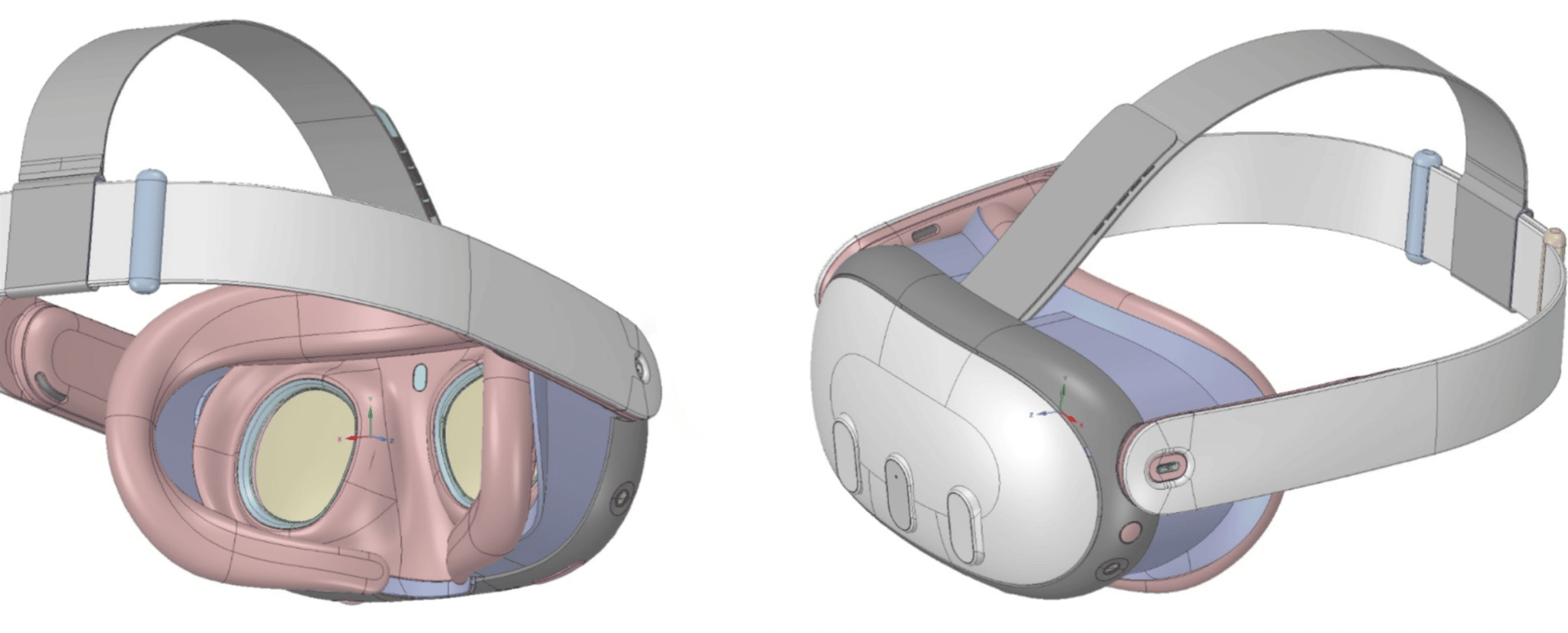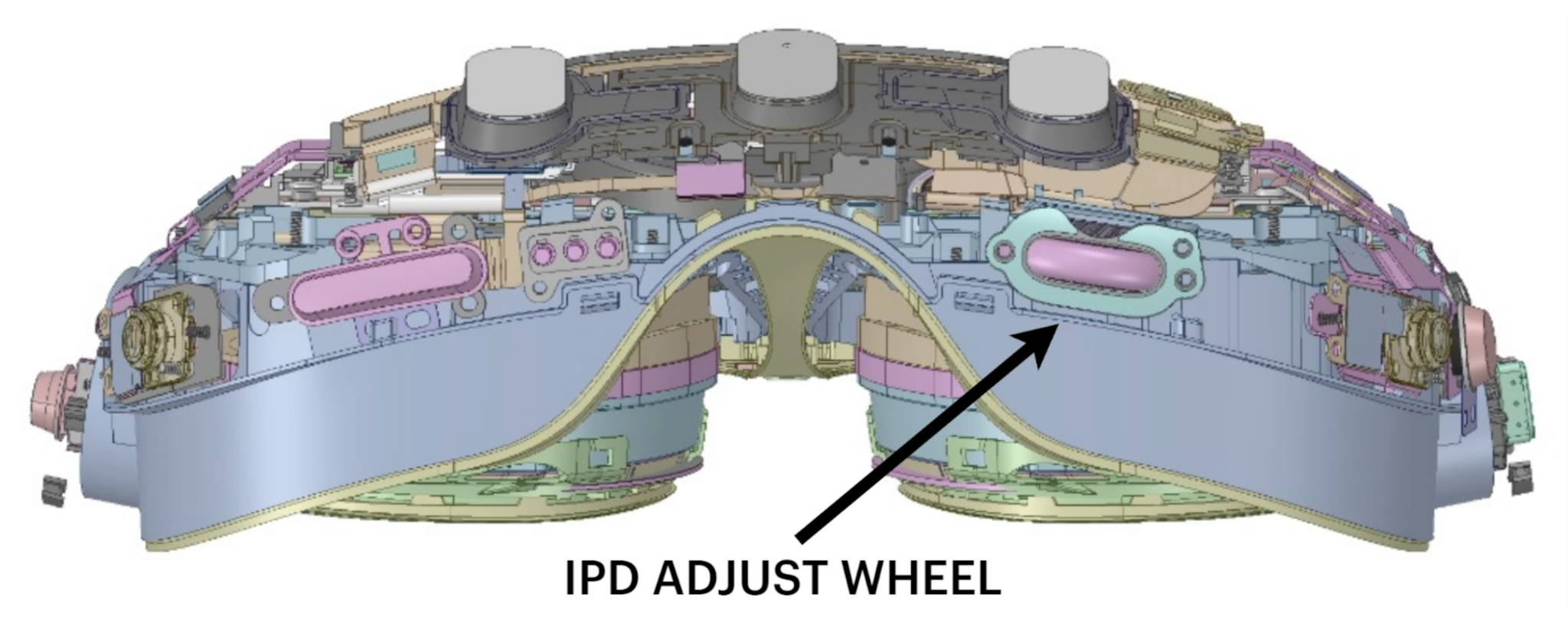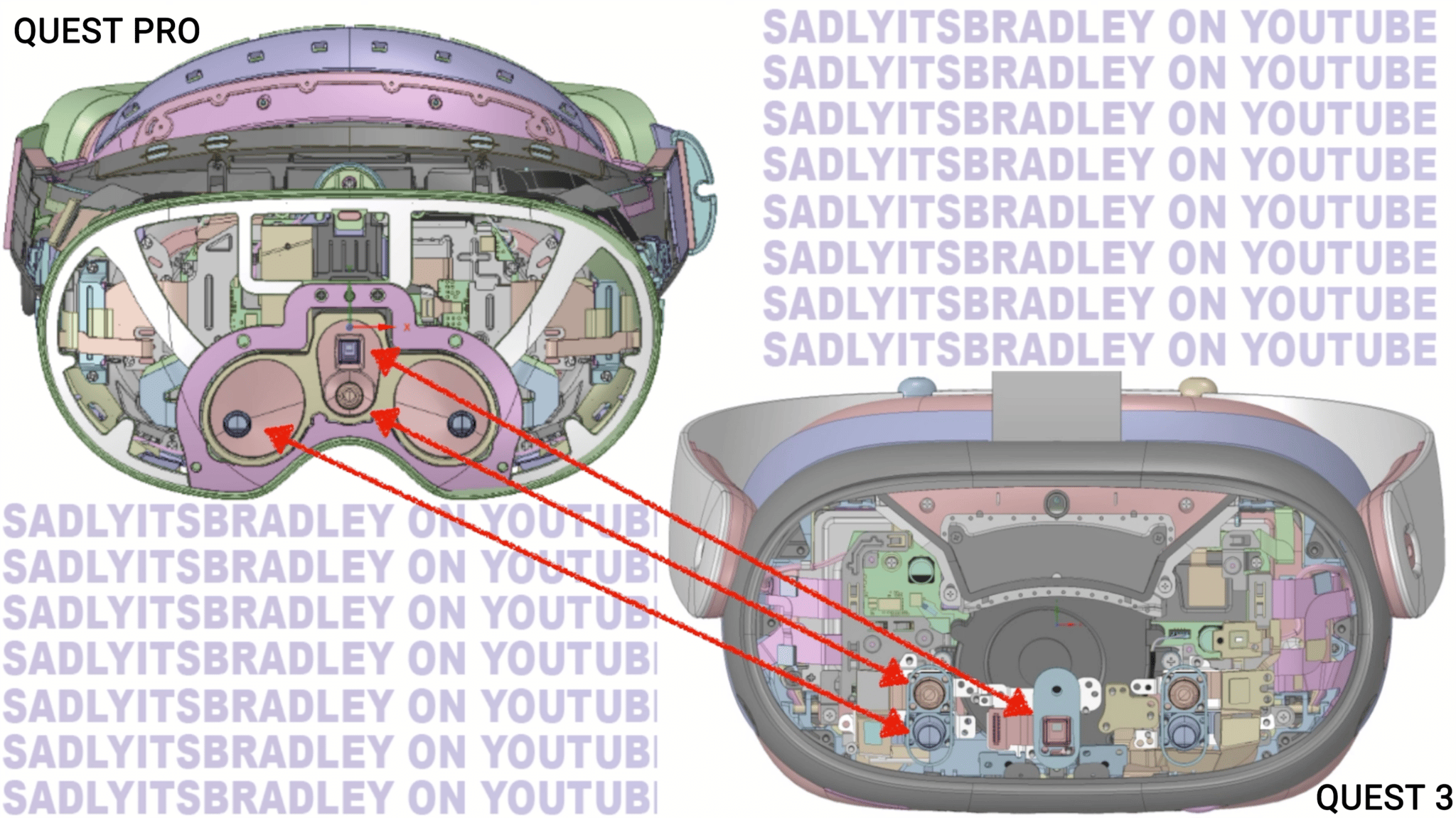Apparent schematics of Meta Quest 3 were leaked to YouTuber SadlyItsBradley (Brad Lynch).
In May apparent schematics of Quest Pro were also leaked to Lynch. The validity of that leak was effectively confirmed earlier this month when a hotel worker found an engineering sample.

The rear angle appears to show pancake lenses that look very similar (if not identical) to Quest Pro‘s lenses. Pancake lenses are already used in the Pico 4 series – they support smaller panels with a shorter gap to the lenses, and thus a slimmer and lighter visor. But whereas Pico also reduces visor weight by housing the battery in the rear of the strap, the Quest 3 model shown has the same kind of soft fabric strap as Quest 2.
The bottom angle appears to show a scroll wheel, presumably for stepless lens separation adjustment. Quest 2 only offers three preset lens separation distances, so the image could be slightly blurred for wearers with an IPD (interpupillary distance) in-between the three options.

In an interview last year, Mark Zuckerberg revealed Meta already had teams working on “the next few generations of virtual reality and what Quest 3 and 4 are gonna look like”.
He went on to say “One of the things I’m really excited about for future versions is getting eye tracking and face tracking in” – features confirmed to arrive in Quest Pro. Zuckerberg reiterated this sentiment in his interview with Lex Fridman in February, saying “when we’re designing the next version of Quest, or the VR headset, a big focus for us is face tracking and eye tracking”.
But the leaked schematics show something surprising: a headset without eye tracking or face tracking. Assuming Zuckerberg didn’t misspeak in those interviews, this suggests a recent strategy shift – and the sensors seen on the front of the headset may be a clue to the reason.
Mixed reality is a major focus of Quest Pro, and is rumored to be the main focus of Apple’s Reality Pro headset. ByteDance’s Pico 4 has color passthrough, but without understanding the geometry of your room it can’t place virtual objects behind furniture that should occlude them, or on surfaces and walls. Meta’s crude solution on Quest 2 is to have you manually mark out your walls and furniture, but this is an arduous process with imperfect results.
The leaked schematic shows Quest 3 having a depth sensor, a feature Mark Zuckerberg said Quest Pro has. This could – either at launch or with a software update – allow these headsets to scan your room automatically, as is already possible on existing devices with depth sensors like HoloLens 2, iPhone Pro, and iPad Pro. A depth sensor also enables higher quality hand tracking.
Meta seems to have decided to prioritize making Quest 3 a full-fledged mixed reality headset with high-quality hand tracking over including eye tracking and face tracking.
It’s also possible that Meta has multiple prototype candidates for Quest 3, and the headset seen in this leak is just one of them.

Quest 3’s biggest apparent improvement isn’t something you’ll see in any schematic though. A source of Lynch told him it will use the yet-to-be-announced Snapdragon XR2 Gen 2 chipset. Current standalone headsets – including Quest 2, Pico 4, Vive Focus 3, and Lynx R1 – use the current XR2, which was recently retroactively labeled Gen 1 by Qualcomm.
XR2 Gen 1 is a variant of the Snapdragon 865 smartphone chip first shipped in early 2020. Qualcomm has since followed up the 865 line with two new generations, so an XR2 Gen 2 based on one of these chips could deliver significant performance improvements, enabling games with higher fidelity graphics and grander scale.
Don’t expect a Quest 3 announcement at Meta Connect this year however – The Information viewed an internal Meta roadmap in May showing Quest 3 slated for 2023. Meta is “laser-focused” on Quest Pro this year.






























